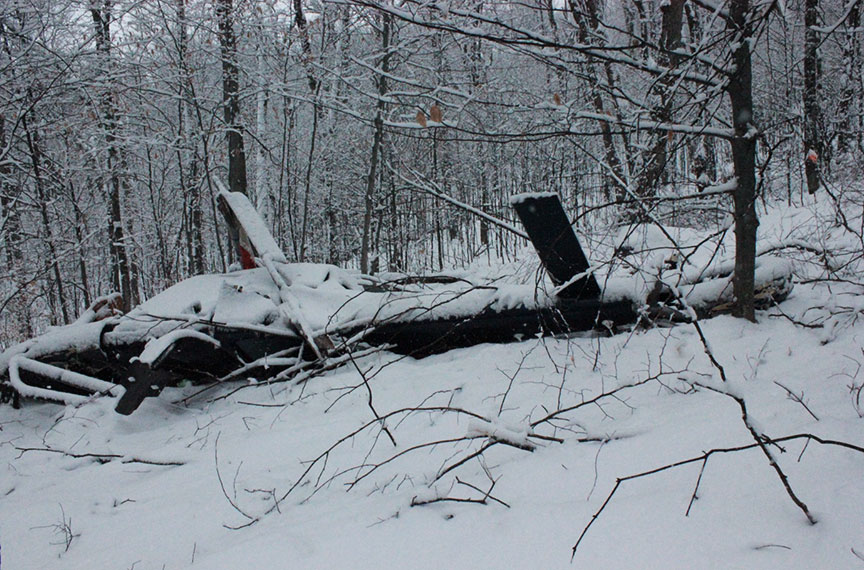Collision with terrain
Eurocopter EC120B (helicopter), C-FSII
Sainte-Agathe-des-Monts, Quebec, 5 NM W
The occurrence
On 19 November 2018, at 1022 Eastern Standard Time, a student pilot, flying solo in his privately owned Eurocopter EC120B helicopter (registration C-FSII, serial number 1473), took off from Rouyn-Noranda, Quebec, heading to the Mirabel Hélico heliport, near Mirabel, Quebec, where his flight instructor was expecting him to arrive at approximately 1300. At 1320, because the helicopter had not yet arrived and had not communicated since the last call, the instructor contacted the Joint Rescue Coordination Centre Trenton, Ontario, to report that C-FSII had not arrived at its destination. No emergency locator transmitter signal was detected. A Canadian Forces Hercules CC130 aircraft and Griffon CH146 helicopter began a search. The helicopter was found at 1604 the next day, 20 November 2018, in a wooded area on the side of a hill, approximately 5 nautical miles west of Sainte-Agathe-des-Monts, Quebec. The helicopter had sustained substantial damage as a result of the impact, but there was no post-impact fire. The student pilot received fatal injuries.
Media materials
News release
Deteriorating weather, insufficient student supervision led to fatal collision with terrain of a helicopter in November 2018
Read the news release
Deployment notice
TSB deploys a team of investigators to helicopter accident west of Ste-Agathe-des-Monts, Quebec
Dorval, Quebec, 21 November 2018 - The Transportation Safety Board of Canada is deploying a team of investigators to the site of a fatal accident involving a Eurocopter EC120 helicopter west of Ste-Agathe-des-Monts, Quebec. The TSB will gather information and assess the occurrence.
Investigation information
Download high-resolution photos from the TSB Flickr page.
Class of investigation
This is a class 3 investigation. These investigations analyze a small number of safety issues, and may result in recommendations. Class 3 investigations are generally completed within 450 days. For more information, see the Policy on Occurrence Classification.
TSB investigation process
There are 3 phases to a TSB investigation
- Field phase: a team of investigators examines the occurrence site and wreckage, interviews witnesses and collects pertinent information.
- Examination and analysis phase: the TSB reviews pertinent records, tests components of the wreckage in the lab, determines the sequence of events and identifies safety deficiencies. When safety deficiencies are suspected or confirmed, the TSB advises the appropriate authority without waiting until publication of the final report.
- Report phase: a confidential draft report is approved by the Board and sent to persons and corporations who are directly concerned by the report. They then have the opportunity to dispute or correct information they believe to be incorrect. The Board considers all representations before approving the final report, which is subsequently released to the public.
For more information, see our Investigation process page.
The TSB is an independent agency that investigates air, marine, pipeline, and rail transportation occurrences. Its sole aim is the advancement of transportation safety. It is not the function of the Board to assign fault or determine civil or criminal liability.
